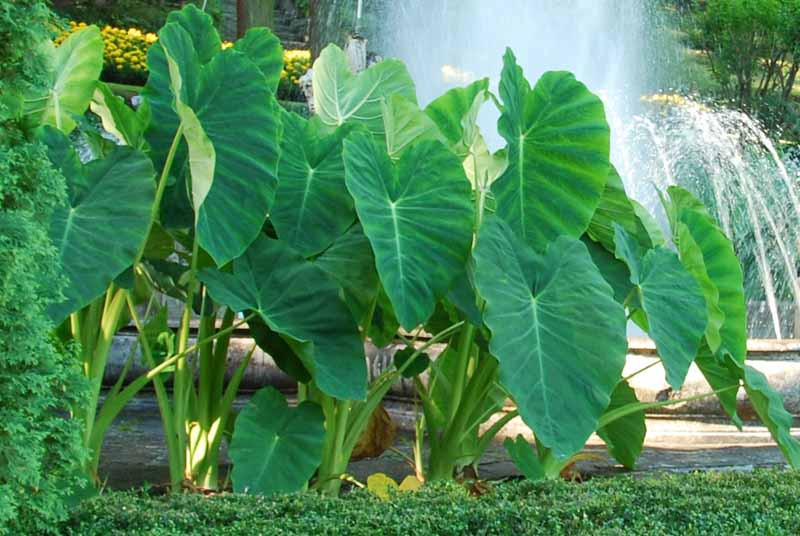Taro (Colocasia esculenta): A Versatile and Culturally Significant Plant
Description: Taro, scientifically known as Colocasia esculenta, is a perennial, tropical plant primarily grown for its edible, starchy tubers and lush foliage. It is distinguished by its large, heart-shaped, and sometimes arrow-like leaves that are both ornamental and functional. The leaves are a deep green, often with a glossy appearance.
Origins and Cultural Significance: Native to Southeast Asia and India, Taro has been cultivated for thousands of years and holds significant cultural importance in many societies, particularly in the Pacific Islands, Asia, and Africa. It is not just a staple food but also a part of various cultural rituals and traditions.
Plant Type and Growth: Taro is a robust plant that prefers wet, humid conditions, typically found in marshy areas. It grows from corms, which are swollen underground stems that store nutrients.
Size: The plant can reach up to 6 feet in height, depending on the variety and growing conditions.
Edible Tubers: Taro’s primary value lies in its tubers, which are rich in carbohydrates and an excellent source of dietary fiber, vitamins, and minerals. The tubers are highly versatile in cooking and can be roasted, boiled, fried, or used in a variety of dishes.
Foliage and Flowers: While mainly grown for its tubers, Taro’s foliage is also aesthetically appealing, making it a popular choice for water gardens and tropical landscaping. The plant produces inflorescences enclosed in a spathe, similar to other members of the Araceae family, but these are generally not the main attraction.
Hardiness and Care: Taro is hardy in USDA zones 8-11. It requires a warm climate to thrive and does not tolerate frost. For optimal growth, it needs abundant water, rich soil, and partial to full sun exposure.
Harvesting and Processing: The tubers are harvested when the plant is about a year old. Proper processing and cooking are essential, as raw Taro can contain calcium oxalate crystals, which can be toxic when ingested.
Uses Beyond Food: In addition to its culinary uses, Taro leaves are often used as natural wrappings for cooking various dishes, adding a unique flavor.
Environmental Impact: Taro is known for its ability to grow in waterlogged conditions, making it a useful plant for areas with poor drainage. However, it should be grown responsibly as it can become invasive in certain environments.

